#imaginary tectonic timeline
Text


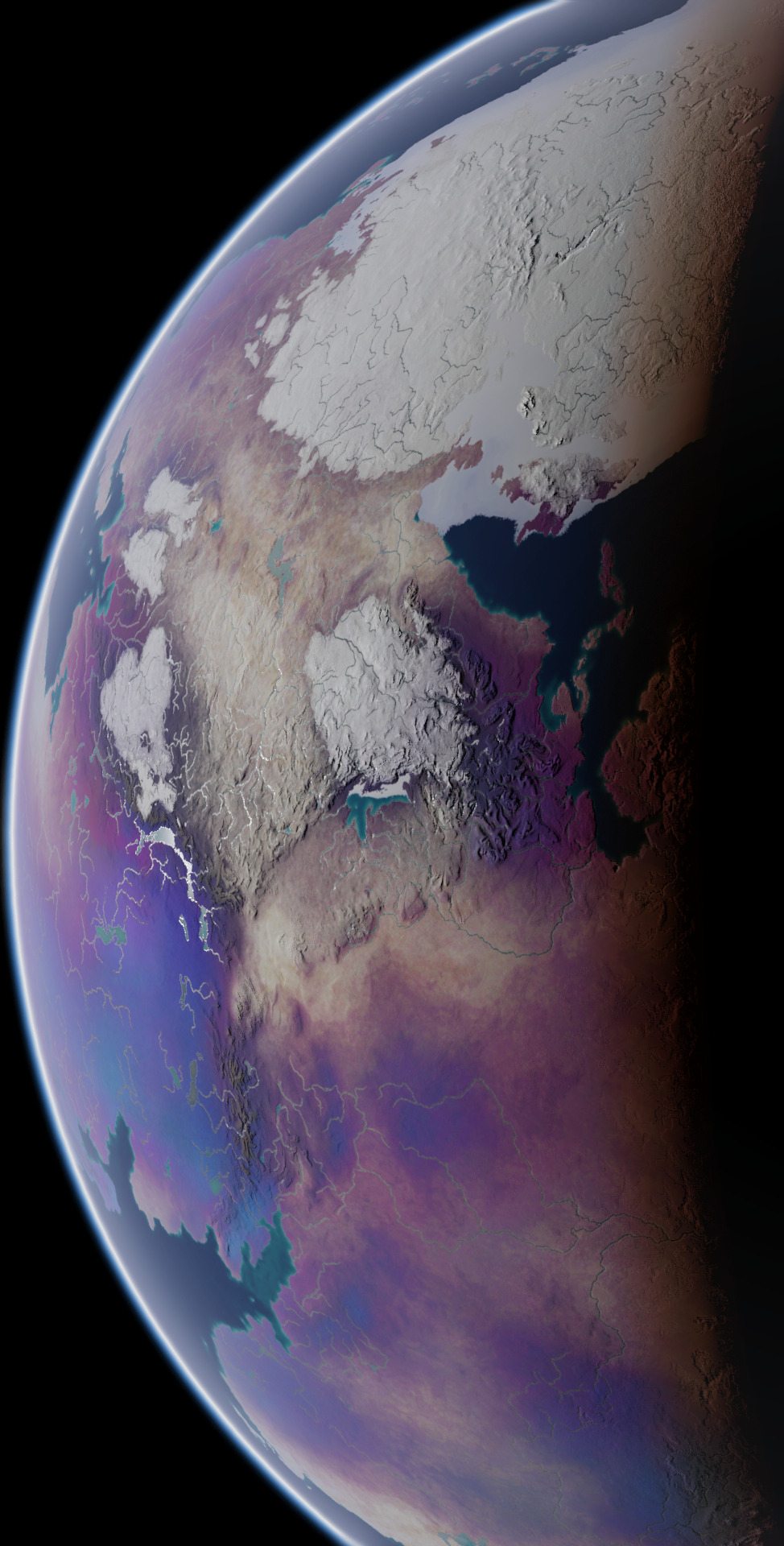


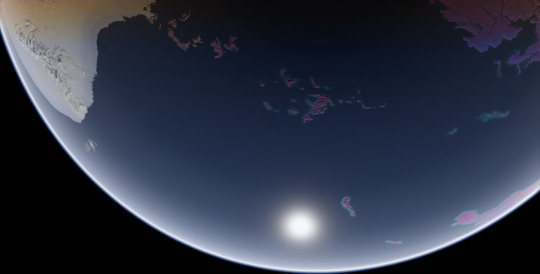

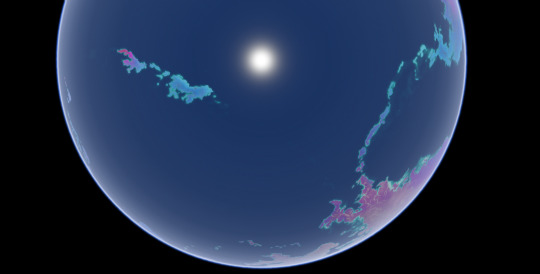
These screenshots I took in Blender are the final product of a commission I worked on for over a year, of my client's planet Ayrum. These represent the planet as it appears at the Northern Spring Equinox, at various angles and different times of day. This project had multiple phases and produced many maps and figures, so I'll be making multiple posts about it over the course of multiple days, working from the earliest results up to the images used in these screenshots.
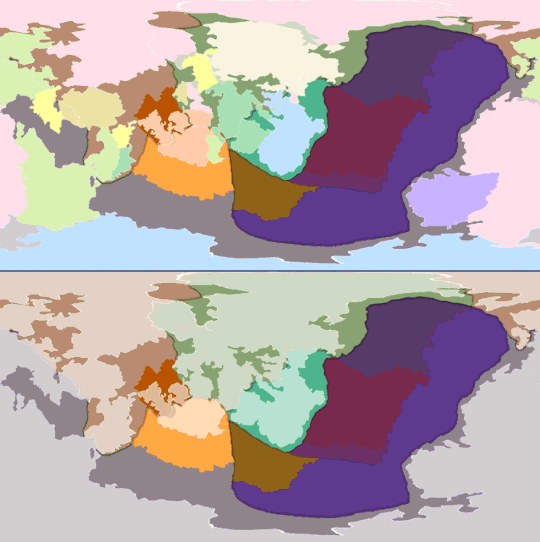
First, the tectonic history sequence, covering about 600 million years of activity. The colors of continental crust in the gif's top half represent which plate it will belong to in the end, and the colors used in the bottom half represent what plates they belong to at the time
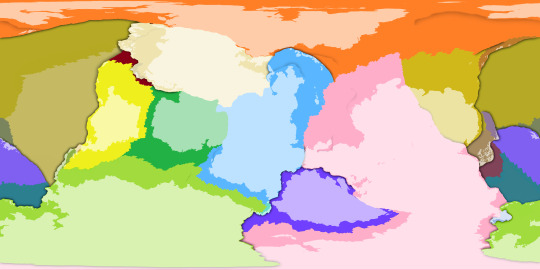

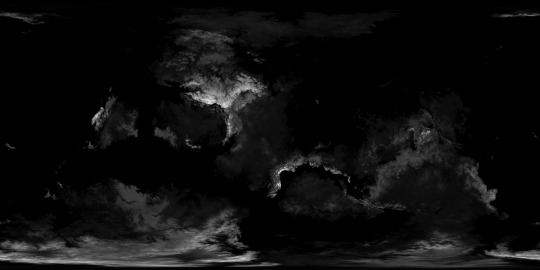

With the tectonic history settled, it's easier to determine what the topography should look like. The two greyscale elevation maps start from the lowest trench depth and from sea level respectively, and the color-graded elevation map has dry land differentiated from bodies of water.


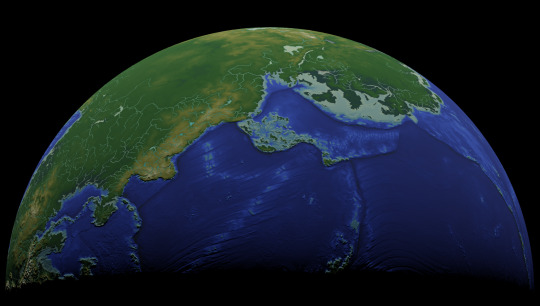


Dipping into Blender once again, with some screenshots where I used the color-graded elevation map as the image texture and the greyscale elevation map as the displacement texture, to emphasize the topography. This will be all for today, but there is much more to come.
These maps were made for the user @umbrace-ramble, to whom I am very thankful for this commission and all the experience it inspired me to gain.
Rendered in Photopea with the aid of Blender,
screenshots taken in Blender,
November 2022-January 2024
#mapmaking#worldbuilding#first posts of many#commission#Blender#digital painting#Photopea#plate tectonics#topography#elevation#bathymetry#imaginary tectonic timeline#imaginary geology#long term project#Christopher Maida Artwork
100 notes
·
View notes
Text
How Plate Tectonics and Climate Change Shaped the Kangaroo’s Habitat

Hello Tumblr users,
Have you ever wondered why kangaroos, the iconic symbols of Australia, are not found anywhere else in the world? Well, we have some answers for you in this newsletter.
The origin of kangaroos
Kangaroos are a special breed of animals. They are popular for having pouches in their bellies where they carry their young ones until they can fend for themselves. Their young ones are called joeys. Secondly, the kangaroos are unique in that their movements are characterized by hopping. In addition, kangaroos are herbivorous and chew cud. That means that they regurgitate their food, and re-chew it before the food is finally digested and absorbed.
About 60 species of kangaroos exist. However, there are four main species: the antilopine kangaroo, the western gray kangaroo, the red kangaroo, and the eastern gray kangaroo. All these types of kangaroo belong to the genus Macropus.
A large percentage of kangaroos have their habitat in Australia. However, a few of them inhabit other parts of the world.
But how did they end up in Australia?
According to WorldAtlas, kangaroos originated in South America, when all continents were part of the super continent known as Gondwanaland. However, 180 million years ago, the continents split away occupying their present locations. Consequently, most of the kangaroos became natives of Australia.
The mystery of Wallace’s Line
However, this does not explain why kangaroos are not found in other parts of Asia, especially those close to Australia. This puzzle is known as Wallace’s Line, an imaginary boundary separating Australia, New Guinea, and parts of Indonesia from continental Southeast Asia.
According to a recent study by biologists at The Australian National University (ANU) and ETH Zurich in Switzerland, the uneven distribution of Australian and Asian species is due to changing plate tectonics and a dramatic shift in Earth’s climate tens of millions of years ago.
The study revealed that about 35 million years ago, Australia was located much further south and was connected to Antarctica. At some point in Earth’s timeline, Australia broke away from Antarctica and over millions of years drifted north, causing it to crash into Asia. That collision gave birth to the volcanic islands that we now know as Indonesia.
These Indonesian islands served as “stepping stones” for animals and plants originating from Asia to reach New Guinea and northern Australia. However, the Australian species, which had evolved in a cooler and increasingly drier climate over time, were less successful in gaining a foothold on the tropical islands compared to the creatures migrating from Asia.
The researchers analysed a dataset of about 20,000 birds, mammals, reptiles, and amphibians to reach this conclusion.
The exceptions
Of course, there are some exceptions to this rule. Some kangaroos do live outside Australia, but they were either introduced by humans or migrated naturally over time.
For example, Natural World Life reports that the largest population of kangaroos outside of Australia can be found in New Guinea, specifically in the highlands of Papua New Guinea and the Indonesian province of West Papua. These regions are home to various kangaroo species, including the New Guinea pademelon (Thylogale browni) and the agile wallaby (Macropus agilis).
Another example is New Zealand, where several species of wallabies were introduced by European settlers in the 19th century. They have since established wild populations in some areas.
There have also been rumors of “errant kangaroos” existing in America. However, this has not been easy to prove since the kangaroos are said to grow in secret. Decades ago, kangaroos were sighted in Nebraska, Kansas, and Minnesota according to a book written by Loren Coleman entitled “Mysterious America: The Ultimate Guide to the Nation’s Weirdest Wonders.”
Conclusion
So there you have it. The reason why you don’t see kangaroos outside of Australia is mostly due to ancient geological and climatic events that shaped the distribution of life on Earth.
We hope you enjoyed this newsletter and learned something new today. If you did, please share it with your friends and followers on Tumblr.
Until next time,
Your mad scientist writing
1 note
·
View note